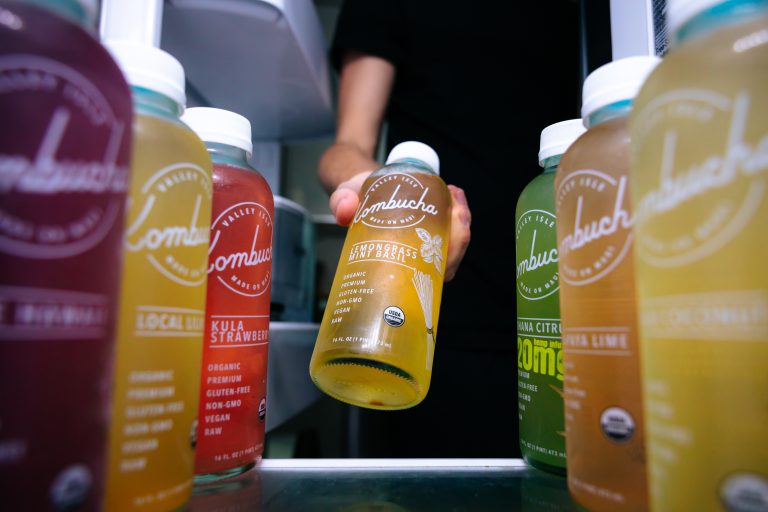Featured Articles
BNN Bloomberg
How to ensure career opportunities for remote workers

As some workers start returning to the office, an employment lawyer says companies should review their approach to career development for those continuing to work from home to avoid the risk of constructive dismissal claims.
Sunira Chaudhri, employment lawyer and founder of Workly Law, said that remote work has implications for employment agreements that set out worker’s rights, including an expectation for in-person performance evaluations.
“The risks are in workplaces that have allowed remote work. We actually don’t have the infrastructure to evaluate remote workers fairly and consistently among their peers,” Chaudhri said.
This can create problems for workers who choose remote work and still want to progress in their career, Chaudhri said, adding that employers will struggle with issues of offering career and educational opportunities to workers who are not physically in the office.
BNN Bloomberg
Have we learned anything from the she-cession?

In April 2020, the female employment rate dropped to its lowest point since 1985, highlighting the disparity between men and women in the workforce, according to a report by RBC Economics. But as the economy recovers and women are wooed back to work, have we learned from the mistakes that drove them away in the first place?
The RBC report said women’s workforce participation fell to 55 per cent amid pandemic-related lockdowns that mainly effected female-dominated industries. The report also showed that job recovery was slower for women than for men and noted that women with children between the ages of six and 17 were more likely to leave the workforce as they continued to carry the burden of family care.
VIVA Scandinavia
Hibiscus is tea with a twist

Looking for a unique tea beverage full of flavour that boasts many
benefits?
This brightly coloured herbal drink offers a great way to boost your hydration and is good for your health. In other words, it’s tea with a twist.
WHAT IS HIBISCUS?
Hibiscus is a tropical plant known for its vibrant, crimson-coloured flower that thrives in areas of warm weather and full sun. Unlike traditional green and black teas which come from the leaves of camellia sinensis, hibiscus tea is derived from the petals of the hibiscus plant thereby classifying it as a tisane.
While there are many different species of hibiscus, it’s the hibiscus sabdariffa with its vivid red petals, which is commonly used to make the tea.
Also known as sour tea, Agua de Jamaica and Roselle, hibiscus tea is naturally brewed from the petals of the flower that give it a distinctive deep pink colour. It has a unique tart taste that some have compared to cranberry juice. When chilled, you can drink hibiscus tea can as a substitute for water thanks to its hydrating properties.
Benefits Canada // March 2020
How employers can help staff take care of aging parents

Nola Miller remembers the day she received 19 calls from her mother at work. As a group home co-ordinator for Winnipeg Child and Family Services, she’d mastered the demands of her job, but the stress of caring for her aging mother was weighing on her.
“When you’re at work, and you’re getting calls like that, you feel like, ‘What am I going to do? How do I take care of her needs?’” she says.
In 2018, one in four Canadians were providing care to an elderly family member or friend, according to Statistics Canada. As Canada’s population rapidly ages, this number will only increase, says Karen Henderson, founder of the Long Term Care Planning Network.
“Elder care is often crisis-driven. With childcare, you’ve got nine months to prepare and you can figure out how you’re going to handle an emergency. But with elder care, you’re not prepared for a 2 a.m. phone call from the hospital saying something has happened.”
When Miller moved her mother to a long-term care facility, she had help from a friend who worked at a seniors’ residence. However, since seniors often move into care as the result of a crisis, their family is unlikely to be prepared to navigate the multiple resources, programs and services available.
VIVA Scandinavia
Kombucha – What's all the fizz about?

Perhaps you’ve heard talk amongst co-workers about the latest beverage trend: kombucha. Curious, you did a quick Internet search and came up with a list of articles extolling its benefits. But what is this beverage exactly and why are so many people talking about it now?
Kombucha started to gain popularity in North American around 2017 and hit a peak about a year later with magazines and websites publishing articles about this re-discovered wonder drink. It appealed to taste buds looking for an alternative to traditional soda and also had the added bonus of offering some health benefits.
WHAT IS KOMBUCHA?
Kombucha is a fermented slightly alcoholic and lightly effervescent tea beverage made sugar and a “symbiotic culture of bacteria and yeast,” known as SCOBY. During the fermentation process, the SCOBY absorbs the sugar in the mix turning the liquid into a carbonated beverage that has the fizz of a soft drink, is slightly sour in taste, and is filled with nutrients.
The use of kombucha has been traced as far back as 221 B.C. in the northeastern region of China where it was first consumed by Emperor Qin Shi Huangdi who believed it could be the key to a longer life.
As trade expanded to the west, by the late 1800s had kombucha made its way to Russia and then Germany around the time of World War I. The drink gained popularity in North America in the 1990s as consumers sought out products that promoted well-being.
The Toronto Observer // April 2019
Private sponsors gives refugees a new life

Amr Al-Faham remembers the moment after his arrival to Canada from Turkey in December 2016, when the documents placed in his hand identified him as a permanent resident of Canada. This was the start of a new life; one that was made possible thanks to the Ripple Refugee Project, a Toronto-based not-for-profit private sponsorship group.
“I still cannot believe that on arrival, and with a two-hour process, I was provided with documents that will help change my life for the better and for the rest of my life,” he wrote in a 2016 blog.
Al-Faham is one of the thousands of displaced people who call Canada home after escaping war or persecution in their homeland.
Canada has committed to settling 45,000 refugees in 2019, including 19,000 through its Private Sponsorship of Refugees Program. Though it’s been around for 40 years, little is known about the private program or the Canadian volunteers who drive it.
Private sponsorship groups must satisfy a number of requirements to be eligible to sponsor a family. They must prove they are able to support newcomers financially for the first 12 months after arrival. They also commit to assisting newcomers to adjust to their life in Canada.
Andrew Fitzgerald, chair of the Ripple Refugee Project, describes the relationship between the refugees and their sponsors as “unusual.” Newcomers who don’t know the language and aren’t familiar with Canadian customs rely on their sponsors at a critical point in their lives.
WIMTACH
Students bring a story to life at WIMTACH’s latest hackathon

The hackathon was organized by WIMTACH, (Wearable, Interactive and Mobile Technology Access Centre in Health) which partners with companies who want to take their ideas from concept to market.
For this event, Ian Xun, owner of Anansi Moving Images Inc. approached WIMTACH with an idea for his coffee table book on Jamaican writer, Louise Bennett. Bennett, whose writing and poetry is a reflection on Jamaican life, is considered a cultural icon.
“I wanted it to be a living document that people would go back to and engage with on an ongoing basis, “ Xun said about his book.
Xun had an idea for the creation of a mobile app that would use augmented reality to detect an image and
connect users to other media such as a video or audio recording featuring Bennett’s works. Working with WIMTACH provided Xun with access to state-of-th-art technology and a research team to help develop concepts and bring his project to the next stage of development.
“It’s our first point of contact with the client; to test our capabilities [and] for clients to see how students perform,” said Jeziel Vidal, Project Manager at WIMTACH.
Benefits Canada
What options are available for de-risking DB pension plans?

The 2008 financial crisis is an event that defined benefit plan sponsors won’t soon forget. Roller-coaster markets exposed gaps in their investment strategies, while de-risking appeared on pension committee agendas as they assessed the damage and focused on the road to fully funded statuses.
Back in 2008, few tools were available to de-risk pension plans. But offerings have evolved since then, giving plan sponsors more options than ever.
Philosophy kings
Over the past decade, the impact of volatile markets on pension solvency ratios propelled DB plan sponsors
to start asking more philosophical questions, says Ryan Kuruliak, senior vice-president at Proteus. “A lot of
organizations have asked the fundamental question of to what degree they want to be in the defined benefit
pension business, and some — a smaller minority — have reaffirmed their commitment that, for their own reasons, that type of plan makes sense for them.”
But many other employers have opted to close their DB plans. According to data from Statistics Canada,
there were 9,341 DB plans in 2018, down from 11,539 in 2008. And a 2017 survey by Aon found 58 per cent
of private sector DB plan sponsors had closed their plan to new members to contain costs.
As well, a decade ago, plan sponsors weren’t always putting assets and liabilities together, says Brent Simmons, senior managing director and head of DB solutions at Sun Life Financial. These liabilities include demographic risks, such as longevity, which nobody was talking about back then, he adds. “Folks in Canada are living longer, which is a great news story for all of us. They’re living longer, so we have to pay their pensions longer; that actually increases the cost of providing defined benefit pension plans by 25 to 30 per cent.”
The Toronto Observer
Filming the city’s darkest hours

As the dark sky lingers, the screen from a laptop installed on the passenger seat brightens the inside of Peter Mills’ black Jeep. The silence is interrupted by an occasional crackle from one of the nine scanners he uses to monitor fire, police and ambulance calls across the Greater Toronto Area.
Mills has been capturing scenes of late-night/early morning drama on Toronto’s streets through the lens of his video camera for over 34 years. He listens for a certain type of scanner call, which will lead him to the type of scene a newsroom will want him to shoot.
“You get better footage because you’re there quicker,” says Mills, who prefers to work overnight.
The downside to nights is trying to stay awake, he says. Coffee and energy drinks keep him fueled through the night.
On this night, Mills is chatting with a reporter when something catches his ear on the radio. He stops, replays the scanner call from Toronto Fire and within a minute he’s tearing out of the parking to a residential fire in Scarborough. The address is 27 kilometres away, but with empty streets at 3:59 a.m., his drive will be a quick 24
minutes.
By 4:35 a.m., Mills has already filmed a variety of angles of the streams ofsmoke meandering out of a second floor apartment window in a Scarborough strip mall. He knows exactly what footage a news editor will pay for. It’s why he is careful to exclude a shot of the giant Adult Video sign that dominates a large portion of the building’s front.
